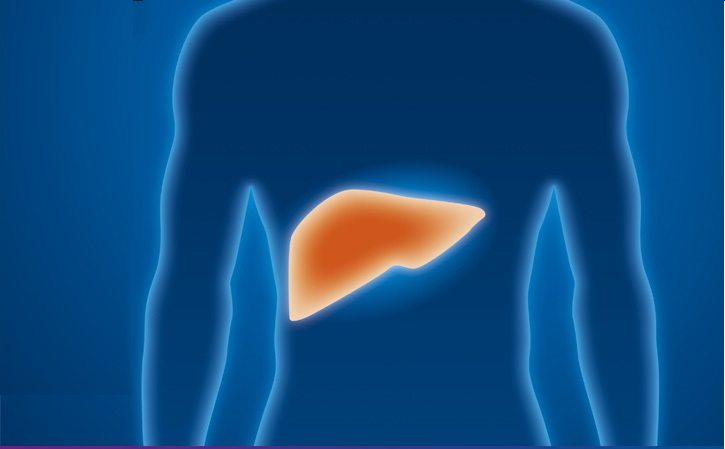Manash Jyoti Kalita, SimantaKalita, Kalpajit Dutta, Subhash Medhi*
Department of Bioengineering & Technology, Gauhati University, Guwahti-14, Assam
*Corresponding author.
Email: subhashmedhi@gauhati.ac.in
Viral hepatitis, a global public health problem, is becoming a pandemic in India. Presently there are five different types of Hepatitis virus, viz. HAV, HBV, HCV, HDV, & HEV. Chronic viral hepatitis due to HBV or HCV may result in serious complications leading to patient’s death. As per WHO report on viral hepatitis, HBV and HCV affect 325 million people worldwide, causing 1.4 million deaths a year. In India, HBV affects 4% of the population (Ray, 2017) while the HCV infection in India is estimated at between 0.5% and 1.5% (Puri.P et.al,2014). Reports show HEV to be the major cause of both sporadic and epidemic hepatitis in India excluding the North Eastern region, where Hepatitis A has been reported to be the major cause behind acute and fulminant viral hepatitis, thereby exhibiting regional difference in infection pattern. Thus, for accurate and effective treatment regimen for care and cure of viral hepatitis, it is important to diagnose the type of viral infection first followed by molecular testing for the confirmed detection of the virus, and finally genotyping of the virus, since the disease progression and severity is solely correlated with the viral genotype. For instance, it has been shown that patients infected by HCV subtype 1b poorly respond to interferon therapy in comparison to the infection with other subtypes of HCV (Davarpanah et al., 2009).
Classical Virological test for HBV & HCV
A) Serological/Immunological test for HBV & HCV:
Serological screening for the presence of HBV is based on the detection of hepatitis B surface antigen (HBsAg) by enzyme immunoassay; further, the detection of HBc IgM indicates chronic HBV infection. Screening for HCV infection is based on the detection of total anti-HCV antibodies by enzyme immunoassay. For detection of actively replicating virus, HCV core antigen can be assayed.
B) Non-immunological Test by NAT:
NAT (Nucleic Acid Testing) through PCR is the gold standard for confirmation of infection, which involves detection of circulating viral genomes in serum or plasma including HBV DNA or HCVRNA, respectively. The test involves extraction of viral nucleic acid from the serum samples and PCR amplification of the target region.
“Point-of-care’’ tests for HBV & HCV
A) Serological/Immunological point-of-care tests (rapid diagnostic tests):
The basic principle of rapid diagnostic test (RDT) is to immobilize the antigen or the antibody to a solid surface followed by attaching molecules to them which will make the detection visible through naked eyes. An ideal RDT must meet the World Health Organization (WHO) ‘‘ASSURED” criteria (Affordable, Sensitive, Specific, User friendly, Robust & Rapid, Equipment free and Deliverable). Some of the commercially available RDT technologies are lateral-flow immune assay or immune-chromatographic strips or strip-tests, flow-through tests, tests based on the agglutination of particles, and tests based on solid-phase assays (so-called ‘‘dipsticks”). Of all these, the simplest and the most widely used tests for HBV antigens or antibodies or HCV antibodies are lateral-flow immunoassays. (Table showing commercially available RDT kits for HBsAg and Anti-HCV detection is enclosed)
B) Non-immunological point-of-care tests (nucleic acid testing):
Till to date, there is no POC for HBV molecular assay. In contrast, the first POC device for HCV molecular assay was GeneXpert Omni (Cepheid, Sunnyvale, CA), which is a small (23 cm tall), lightweight (1 kg), easy to use HCV Viral Load tester. HCV RNA can be detected and quantified from 100 µl of whole blood within 60 minutes. GeneXpert Omni is WHO-prequalified, but has not yet received approval from the US FDA. GenedriveTM (Genedrive Diagnostics, Manchester, UK), is another small portable POC device developed for detection HCV RNA from 30 µl of plasma within 90 minutes.
Table 1: Some of the commercially available HBsAg Rapid Diagnostic Test (RDT) kits (Chevaliez et al., 2018)
| Test | Manufacturer | Nature of device | Matrices | Volume needed | Time to result | FDA
approved |
WHO
prequalified |
| Determine TMHBsAg | Alere, Waltham, MA | Lateral Flow | Whole Blood, Serum, plasma | 50 µl | 15 min | No | No |
| VIKIA HBsAg | bioMerieux | Lateral Flow | Whole Blood, Serum, Plasma | 75 µl | 15-30 min | No | No |
| DRW HBsAg rapid test | Diagnostics for the Real World, San Jose, CA | Lateral Flow | Serum, Plasma | 80 µl | 30 min | No | No |
| Toyo HBsAg Rapid test | Turklab, Izmir, Turkey | Flow Through | Whole Blood, Serum, Plasma | 100 µl | 5-15 min | No | No |
| Assure HBsAg Rapid test | MP Biomedicals, Singapore | Flow Through | Whole Blood, Serum, Plasma | 50 µl | 15-20 min | No | No |
Table 2: Some of the commercially available Anti-HCV Rapid Diagnostic Test (RDT) kits (Chevaliez et al., 2018)
| Test | Manufacturer | Nature of device | Matrices | Volume needed | Time to result | FDA
approved |
WHO
prequalified |
| Ora Quick HCV rapid antibody test | Ora sure Technologies, Turkey | Lateral Flow | Whole Blood, Serum, oral fluid | 5-40 µl | 20-40 min | Yes | Yes |
| TOYO anti-HCV test | Turklab, Izmir, Turkey | Lateral Flow | Whole Blood, Serum, Plasma | 30-60 µl | 5-15 min | No | No |
| Signal HCV
Ver 2.0 |
Span Divergent, India | Flow Through | Serum, Plasma | 100 µl | 10 min | No | No |
| Labmen HCV test | Turklab, Izmir, Turkey | Lateral Flow | Whole Blood, Serum, Plasma | 10 µl | 15 min | No | No |
| Multisure HCV | MP Biomedicals
Singapore |
Lateral Flow | Whole Blood, Serum, Plasma | 25 µl | 15 min | No | No |
C) Dried Blood Spot (DBS):
It is the process of collecting blood samples on a solid surface like filter paper, first introduced in Scotland by Guthrie in 1963 for neonatal screening for phenyl ketonuria. In DBSs, a few drops of whole blood are collected onto a special absorbent filter paper which is subsequently desiccated and stored at -20°C or transported to the laboratory for analysis. It can be shipped as a non-hazardous material through normal courier or mail to laboratory.
i) Dried blood spots for HBV markers:
HBV markers like HBsAg, HBeAg, anti-HBs antibodies and anti-HBc antibodies can be detected using DBSs with differential sensitivity and specificity when compared to classical immune assay techniques. Besides the detection of the markers, DBSs can also be used for detection of HBV DNA from whole blood. Few reports suggest good performance of DBS in detection as well as quantification of HBV DNA and HBV genotyping. As per WHO guidelines, DBS can be used for HBsAg detection and HBV DNA quantification.
ii) Dried blood spots for HCV markers:
DBSs can also be used for detection of anti-HCV antibodies with high sensitivity and specificity. It involves a post extraction third-generation enzyme immunoassay. Its use as a RDT has also been validated. A study report showed a strong correlation between HCV RNA levels measured in DBS specimens and in serum samples from 62 patients, regardless of the HCVgenotype (1 to 4).
Genotyping of HBV & HCV
A) Classical PCR based Genotyping: In PCR based genotyping the samples, after extraction, nucleic acids are subjected to PCR amplification for targeted region using specific primers. In PCR based genotyping, the primers are designed in such a way that they can specifically amplify the different genotypes, which are distinguishable from the amplicon size of the product on gel.
B) Sequencing Based Genotyping: In sequencing based genotyping method, are viral nucleic acid is extracted from the samples and then subjected to PCR amplification of the targeted region. The amplicon is then eluted from the gel using gel extraction kit and subjected to ethanol precipitation first and finally to sequencer machine. The sequencing data obtained is than analyzed to find the phylogenetic relationship of the isolated virus using NCBI gene bank database sequences as reference sequence by performing homology searching.
C) HRM based genotyping: The level of genome heterogeneity differs considerably among different regions of the Hepatitis C Virus genome. The variation in the nucleotide sequence ranges from as little as 10% in the 5′ Un-translated region (5′-UTR) to as much as 50% or even more within the E1 region (Ahmadi Pour et al., 2006). Based on genome heterogeneity a whole new approach was introduced named High Resolution Melting (HRM), where the sole discriminating power for genotype determination lies in difference in GC content and size of amplicon. In contrast to other genotyping techniques, High Resolution Melting (HRM) is a simple, rapid, and low-cost method (Alavian et al., 2002; Moghaddam et al., 2006). As an advantage of HRM, PCR amplification and melting curve analysis are both performed within the same tube, without any need for post-PCR processing. HRM based genotyping is becoming the most promising genotyping technique globally during the recent years. Viral genotyping with this method is highly accurate, sensitive and low in cost. Compared to type-specific probe and sequencing techniques, the accuracy of the novel method is very comparable, but the sensitivity is significantly higher and the cost is much lower than type-specific probe technique, and the cost is significantly lower than sequencing. The genotyping sequences are integration of 5¢-UTR and C regions so that the classification capability of the method is evidently enhanced.
However, even this method may have its own disadvantages. Firstly, mixed genotypes cannot be distinguished by HRM combined with BDA. Although, the prevalence of mixed genotypes in common population is very low; in populations who were injected drugs or received long-term hemodialysis, the prevalence of mixed infection is relatively higher. In addition, at least one pair of outer primers and four or five pair of inner primers are needed for this method, which present difficulties in primer design and experimental operation, and repeated optimization of primers is required to simplify operations and reduce cost.
Authors Information:
- Subhash Medhi, Assistant Professor, Department of Bioengineering & Technology, Gauhati University, Guwahati-14.
- Manash Jyoti Kalita, Ph.D. Scholar, Department of Bioengineering & Technology, Gauhati University, Guwahati-14.
- Simanta Kalita, Ph.D. Scholar, Department of Bioengineering & Technology, Gauhati University, Guwahati-14.
- Kalpajit Dutta, Project fellow at GMCH, Guwahati.
References:
Ahmadi P.H.; Keivani, H.; Sabahi, F. and Alavian, S.M. (2006). Determination of HCV Genotypes in Iran by PCR-RFLP. Iranian J. Publ. Health. 35: 54-61, https://www.ncbi.nlm.nih.gov/pubmed/ (Accessed on 25 October, 2019).
Alavian, S.M.; Gholami, B. and Masarrat, S. (2002). Hepatitis C risk factors in Iranian volunteer blood donors: A case-control study. J. Gastroenterol. Hepatol. 17: 109 2-97, https://www.ncbi.nlm.nih.gov/pubmed/ (Accessed on 25 October, 2019).
Chevaliez, S. and Pawlotsky, J.M. (2018). New virological tools for screening, diagnosis and monitoring of hepatitis B and C in resource-limited settings. Journal of Hepatology. 69: 916-926. https://www.ncbi.nlm.nih.gov/pubmed/ (Accessed on 25 October, 2019).
Davarpanah, M.; Saberi-Firouzi, A.; Bagheri, L.M.; Mehrabani, K.; Behzad-Behbahani, D.; Serati, A. and Ardebili, M. (2009). Hepatitis C Virus Genotype Distribution in Shiraz, Southern Iran. Hepatitis Monthly. 9(2): 122-127. https://www.ncbi.nlm. nih.gov/pubmed/ (Accessed on 25 October, 2019).
Moghaddam, H.; Seyed, M.K.; Hossein, K.; Hossein, S.K.; Mohammad, Basiri, A.; Nazanin, A. and Alavian, S.M. (2006). Distribution of hepatitis C virus genotypes among hemodialysis patients in Tehran – a multicenter study. Journal of Medical Virology. 78: 569-573. https://www.ncbi.nlm.nih.gov/pubmed/ (Accessed on 25 October, 2019).
Puri, P.; Anand, A.C.; Vivek, A.; Saraswat, A.; Subrat, K.D. and Radha, K. (2014). Consensus Statement of HCV Task Force of the Indian National Association for Study of the Liver (INASL). Part I: Status Report of HCV Infection in India. Journal of Clinical and Experimental Hepatology, 4: 106-116, https://www.ncbi.nlm.nih.gov/pubmed/ (Accessed on 25 October, 2019).
Ray, G. (2017). Current Scenario of Hepatitis B and Its Treatment in India. Journal of Clinical and Translational Hepatology, 5: 277-296, https://www.ncbi.nlm.nih.gov/pubmed/ (Accessed on 25 October, 2019).




